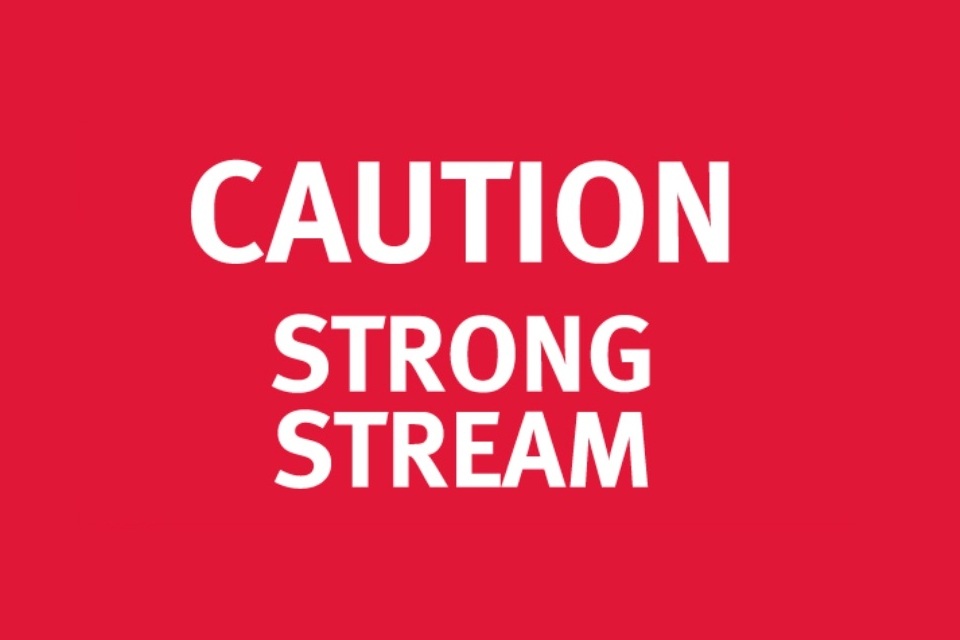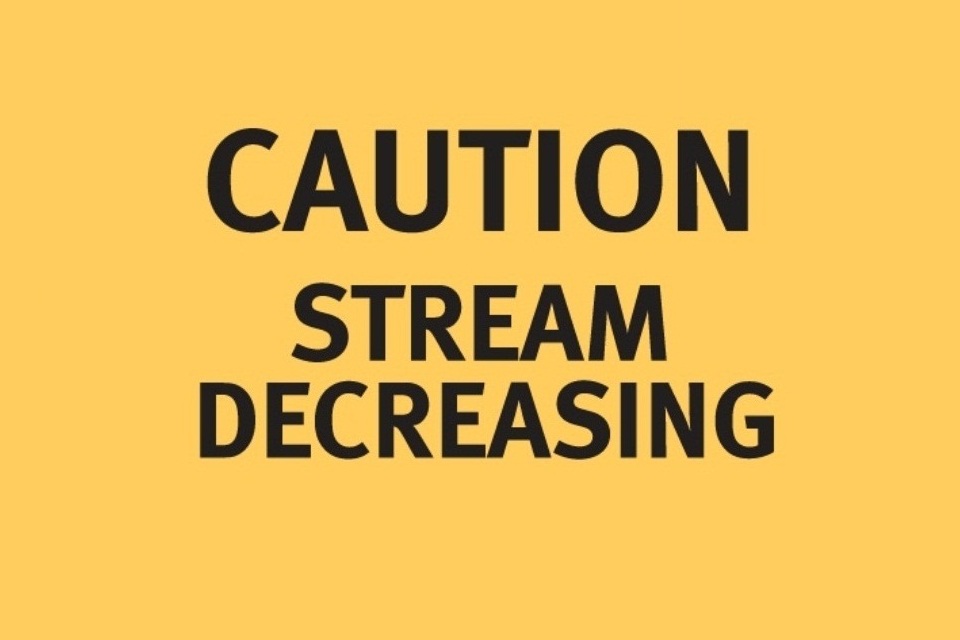Detailed guide: River Thames conditions, closures, restrictions and lock closures
Updated: Notices added for Fallen tree in Windsor reach, Weybridge Silver Skulls, Isis Winter League, Autumn Fours and Nephthys Regatta.
River conditions
Find out the latest river conditions and strong stream warnings by:
- visiting our River Thames Conditions website
- calling our Floodline on 0345 988 1188 (24-hour service) to hear recorded information and advice (find out about call charges)
- talking to lock staff
River closures: updated 27 September 2018
There are currently no unplanned river closures. Please see Planned Lock Closures below.
River restrictions: updated 18 October 2018
| When | Where | What’s happening |
| Wednesday 17 October 2018 until further notice | Windsor reach | Fallen tree 50 metres upstream of Windsor and Eton footbridge: passage is still possible through the centre arch of Windsor and Eton Footbridge with extreme care and caution. |
| Saturday 20 October 2018 from 8:30am to 5pm | Sunbury reach | Weybridge Silver Skulls: the navigation channel will be established on the Surrey, left hand side of the river. |
| Sunday 28 October 2018, from 1pm to 5pm | Iffley reach | Isis Winter League: in between racing divisions a clear navigation channel will be in place along the centre of the river. |
| Sunday 4 November 2018 from midday to 6pm | Iffley reach | Autumn Fours: in between races a clear navigation channel will be in place along the centre of the river. |
| Friday 16 November 2018 from 1pm to 4:30pm and Saturday 17 November 2018 from 9:30am to 4:30pm | Iffley reach | Nephthys Regatta: in between races a clear navigation channel will be in place along the centre of the river. |
| Wednesday 21 to Friday 23 November 2018 from midday to 4:30pm and Saturday 24 November 2018 from 11am to 4:30pm | Iffley reach: Folly Bridge to Iffley Lock | Christ Church regatta 2018: Regatta boards will mark the upstream and downstream extent of the course. In between races a clear navigation channel will be in place along the centre of the river. |
| Sunday 25 November 2018, from 1pm to 5pm | Iffley reach | Isis Winter League: in between racing divisions a clear navigation channel will be in place along the centre of the river. |
| Sunday 20 January 2019, from 1pm to 5pm | Iffley reach | Isis Winter League: in between racing divisions a clear navigation channel will be in place along the centre of the river. |
| Sunday 3 February 2019, from 1pm to 5pm | Iffley reach | Isis Winter League: in between racing divisions a clear navigation channel will be in place along the centre of the river. |
| Sunday 17 February 2019, from 1pm to 5pm | Iffley reach | Isis Winter League: in between racing divisions a clear navigation channel will be in place along the centre of the river. |
Planned lock closures: updated 17 August 2018
The Environment Agency carries out a programme of works on the River Thames every year between October and Easter. This often results in the closure of a number of locks for relatively long periods.
So that river users can plan their winter cruising and boat movements well in advance, the Environment Agency publishes the first issue of their programme of works in August each year.
This programme of work is subject to change, due to weather and other circumstances. Revised issues of the programme of works are published throughout the winter, so customers can keep up to date. To receive this information, sign up to the email update service by emailing
riverthames@environment-agency.gov.uk.
Listed below are the locks that will be closed during the 2018 to 2019 investment programme. The locks will be closed from the first date listed and re-open on the day after the final date:
| When | Where | What’s happening |
| 29 October 2018 to 31 January 2019 | Molesey Lock | Replacing the timber sheeting on the face of each lock gate. |
| 29 October 2018 to 15 March 2019 (Passage may be possible from February 2019) | Caversham Lock | Refurbishing the lock chamber’s concrete walls and timber edging. Replacing the wet boat shed roller shutter doors upstream of the lock. |
| 29 October 2018 to 15 March 2019 | Teddington Lock (launch) | Refurbishing the lock chamber concrete walls and replacing the lock side rubbing timbers and bollards. |
| 1 November 2018 to 15 November 2018 | Cookham Lock | Refurbishing the concrete sill of the tail lock gates. |
| 1 December 2018 to 1 March 2019 | Rushey Lock | Replacing the timber sheeting on the face of each lock gate. |
Here is a map showing the above closures
Keep up to date
Get the latest river information before you go boating. Call the Environment Agency Floodline on 0345 988 1188 and select option 1 for river information for boaters. When prompted enter one of the quick dial numbers below for the area of the river you want to hear about:
| Quick dial codes | Area | Description |
|---|---|---|
| 415000 | Upstream of St John’s Lock to Radcot Lock | St John’s to Radcot locks, including Buscot and Grafton locks |
| 415001 | Rushey to Godstow Lock | Rushey to Godstow locks, including Shifford, Northmoor, Pinkhill, Eynsham and Kings locks |
| 415002 | Osney to Iffley Lock | Osney to Iffley locks only |
| 415003 | Sandford to Clifton Lock | Sandford to Clifton locks, including Abingdon, and Culham locks |
| 415004 | Day’s to Mapledurham Lock | Day’s to Mapledurham locks, including Benson, Cleeve, Goring and Whitchurch locks |
| 415005 | Caversham to Shiplake Lock | Caversham to Shiplake locks, including Sonning Lock |
| 415006 | Marsh to Boveney Lock | Marsh to Boveney locks, including Hambleden, Hurley, Temple, Marlow, Cookham, Boulters and Bray locks |
| 415007 | Romney to Bell Weir Lock | Romney to Bell Weir locks, including Old Windsor Lock |
| 415008 | Penton Hook to Chertsey Lock | Penton Hook to Chertsey locks only |
| 415009 | Shepperton to Teddington Lock | Shepperton to Teddington locks, including Sunbury and Molesey locks |
| 415010 | River Kennet upstream of Blake’s Lock | River Kennet for upstream of Blake’s Lock and down to the confluence with the River Thames |
Find out about call charges.
The Environment Agency sends email updates on River Thames closures and restrictions. To subscribe to this service, email riverthames@environment-agency.gov.uk with ‘subscribe to harbourmaster’s notices’ in the subject line.
Know your river conditions
Any river activity poses a greater risk when there are strong currents, high river levels or cold weather conditions. River flows can increase even during the summer months – never assume sunny weather means the conditions are not hazardous.
Warning boards may be displayed at locks to inform river users of the conditions. Read the explanations of what these mean for you. Don’t take risks and never underestimate the power of the river.
When these red boards are displayed on lock gates, we advise users of all boats not to navigate because the strong flows make it difficult and dangerous.
People in hire boats arriving at a lock where these boards are displayed should stop immediately and contact their hire boat operator to ask for instructions.

When these yellow boards are displayed on lock gates, we advise users of all unpowered boats not to navigate and users of powered boats to find a safe mooring. This is because river flows are likely to strengthen, and red boards could be displayed very soon and without further warning.

When these yellow boards are displayed on lock gates, we advise users of all unpowered boats not to navigate and users of powered boats to navigate with caution.

Dealing with changing river conditions
Read this section carefully to find out what to do if you find yourself in conditions where we advise you to stop navigating. Remember, not all conditions will be serious enough to require all the measures suggested below.
- Please take the advice to stop. Even the most experienced boater can be caught out, so think about those who could be put in danger if they have to help you.
- Moor your boat in a safe place, preferably in a marina or at a recognised mooring. Limited space may be available at some locks. Moor against high banks if you can.
- Ensure your mooring lines are fastened to secure fixings such as bollards, rings or even trees; put out extra lines for additional security and allow enough slack for a further rise in river levels; don’t rely on your own mooring pins or stakes, they might not hold.
- If possible, put extra fendering (eg scaffold poles or strong timber posts) between your boat and the bank side, to prevent your boat drifting onto the river bank and becoming caught up when levels drop.
- Make sure you have a safe exit ashore from your boat. If not, you should consider returning home or finding alternative accommodation until conditions improve.
- If you are running low on essential supplies or have other safety concerns and are not able to vacate your boat safely, treat this as an emergency and dial 999 to ask for evacuation.
- Those in hire boats: if you are advised to stop navigating, you should stop immediately and contact your hire boat operator and follow their instructions.
Please remember your life is more important than your boat
The Environment Agency does not provide emergency services and is not able to carry out search and rescue, or provide supplies to stranded boats.